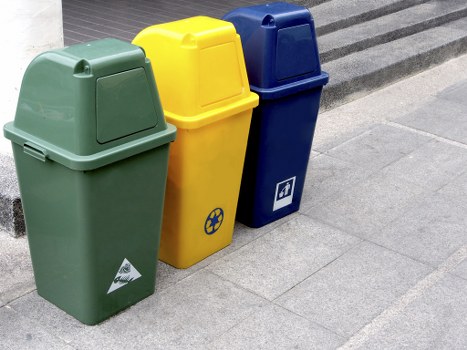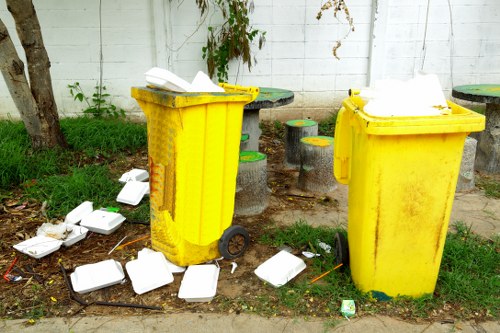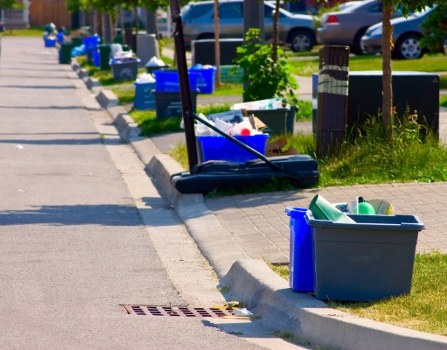Fridge Disposal in Rubbish Clearances
Introduction to Fridge Disposal in Rubbish Clearances

Fridge disposal is an essential aspect of modern rubbish clearances. In today's world, where environmental concerns and waste management have taken center stage, proper disposal of large appliances like refrigerators has become more critical than ever. The process involves not only removing outdated or inefficient models but also ensuring that the components are recycled or disposed of in a manner that minimizes harm to our planet. This article explores every facet of fridge disposal within the context of rubbish clearances, emphasizing its importance, the environmental benefits, and the safety protocols that must be followed.
When discussing rubbish clearances, the proper disposal of household appliances such as fridges cannot be overlooked. The disposal process is both technical and regulatory, requiring an understanding of local guidelines and environmental considerations. It is important to know that improper disposal can lead to negative outcomes including the release of hazardous materials and increased landfill burden. Businesses and households alike are encouraged to stay informed about the best practices and available services for fridge disposal.
In the current scenario, emphasis on eco-friendly practices is reshaping the way we handle waste. Companies that specialize in rubbish clearances are now offering services that specifically address fridge disposal issues, ensuring that recycling and environmental safety are not compromised. As consumers become more environmentally conscious, the demand for such expert services has soared, prompting a deeper investigation into how technologies and regulatory frameworks are merging to promote sustainability.
The Significance of Proper Fridge Disposal

Proper fridge disposal is not simply about removing an old appliance from your home; it is about making a commitment to environmental responsibility. Many older refrigerators contain refrigerants and chemicals that can cause serious harm if released into the atmosphere. This underscores the importance of having professional rubbish clearances that can safely manage the disposal and recycling process. Companies that offer these services ensure that each unit is evaluated for any hazardous components and then processed with the utmost care.
In addition to protecting the environment, proper disposal of fridges supports energy efficiency initiatives and helps reduce waste. Modern appliances are designed with efficiency in mind, but the old units still in circulation can be detrimental to both the environment and your energy bill. By replacing them through a responsible disposal and clearance service, you help promote a sustainable lifestyle while also potentially accessing rebates or incentives for purchasing newer, more efficient models.
Business owners and property managers have a special responsibility when it comes to fridge disposal in large-scale rubbish clearances. For commercial properties, outdated or damaged refrigerators can pose significant risks. Adhering to proper disposal protocols not only meets legal requirements but also enhances a company’s reputation as environmentally responsible. Moreover, using certified disposal services can prevent costly fines and environmental damage, making it a win-win for everyone involved.
Environmental & Economic Impacts

The environmental impact of fridge disposal reaches far beyond the immediate benefits of reducing landfill waste. Refrigerators, especially those manufactured before stringent regulations were in place, often contain substances that are notorious for depleting the ozone layer. By ensuring that these substances are handled correctly during the clearance process, we help stave off further harm to our atmosphere. Countries with robust environmental regulations often show a significant improvement in air quality and better resource management owing to such responsible practices.
Economically, efficient fridge disposal contributes to the circular economy by providing raw materials for recycling and reuse. Metals, plastics, and other components found in refrigerators can be processed and repurposed, reducing the need for virgin materials. This not only cuts down production costs but also encourages industries to innovate in recycling technologies. As a result, the overall economic impact is both holistic and positive, creating jobs and fostering technological advancements in waste management.
Moreover, the relationship between effective rubbish clearances and local economic development should not be underestimated. By creating structured programs for the disposal of appliances, municipalities can generate revenue through recycling initiatives and landfill diversion projects. This cycle of use, recycle, and reuse ensures that valuable materials are returned to the production chain, turning potential waste into economic opportunities and securing a more sustainable future for communities.
Choosing the Right Fridge Disposal Methods

Selecting the appropriate method for fridge disposal involves understanding both the technical and regulatory aspects of the process. There are several disposal methods available, ranging from certified recycling programs to donation initiatives. When choosing a through service, it is essential to research companies that follow strict environmental protocols. Organizations with certifications and positive customer satisfaction ratings are highly recommended, ensuring that your fridge is handled with care and in compliance with current legislation.
One can opt for various approaches such as sell-back programs, recycling drives, or safe scrapping of units. Each method has its own set of procedures and benefits. For instance, if a fridge is still in working condition, donation to a local charity might be the best option. On the other hand, units that are no longer functional should be recycled through firms that specialize in the breakdown and recovery of materials. A well-versed consumer will analyze each option to ensure that the chosen route leads to minimal environmental impact while maximizing resource recovery.
For many, the key to successful fridge disposal lies in knowing the process step by step. Here is an ordered list of tasks that generally need to be completed:
- Assessment of the appliance's condition.
- Identification of any hazardous materials present.
- Safe extraction and removal of refrigerants.
- Disassembly of the unit for recycling.
- Transportation to a certified recycling facility.
Regulations, Safety, and Best Practices

Adhering to safety standards and regulations is paramount when disposing of fridges as part of rubbish clearance. Most jurisdictions enforce strict laws to protect against the improper disposal of appliances that contain hazardous substances. These laws not only mandate the safe handling and recycling of materials but also require that disposal services maintain up-to-date certifications. The implementation of best practices in the industry is guided by national and international standards, which ensure that the techniques used by service providers do not compromise public or environmental safety.
Within this framework, many companies have established internal guidelines that exceed even the minimum required standards. For example, technicians might adhere to protocols outlined in both ISO standards and local government policies. This dual adherence reinforces the reliability of rubbish clearance services, guaranteeing that every step—from collection to recycling—is executed with precision. Key components of these guidelines include the safe removal of toxic substances, proper waste separation, and the secure transportation of decommissioned appliances.
The regulatory landscape is further enriched by the integration of innovative risk management strategies. In some instances, businesses have incorporated advanced monitoring systems to track each phase of the disposal process. Detailed documentation not only provides accountability but also serves as an educational tool for improving future practices. These measures ensure that risks are minimized and that the entire disposal process is transparent and sustainable.
Efficiency Tips for Rubbish Clearances with Fridge Disposal
Employing efficient strategies in fridge disposal can dramatically improve the overall effectiveness of rubbish clearance operations. To begin with, planning is of utmost importance. Start by scheduling a professional assessment to understand the condition and potential hazards associated with your appliance. Once these factors are clear, you can choose the most appropriate disposal method, whether it involves recycling, donation, or resale. Detailed planning prevents delays and ensures compliance with safety standards.
Another vital tip is to work with a service provider that offers comprehensive clearance solutions. A one-stop solution for rubbish clearances that includes fridge disposal means that you benefit from coordinated tasks, from removal to recycling. Providers that manage multiple stages of the process often have established protocols for handling hazardous materials, which significantly reduces the risk of environmental harm. Always ask for proof of certifications or accreditations before engaging a service provider.
Consider using checklists to manage the entire process. Below is an example of a checklist for efficient fridge disposal:
- Assess the condition of the appliance.
- Identify if any hazardous substances are present.
- Decide on the appropriate disposal method.
- Schedule a professional clearance service.
- Ensure documentation and certification are provided.
Future Trends & Final Thoughts
Looking ahead, the future of fridge disposal in rubbish clearances is promising. The ongoing integration of technological innovations such as automated recycling systems and improved hazardous waste management tools is set to overhaul current practices. With increasing investments in research and development, new methods of disassembling and processing outdated refrigerators are emerging. These developments not only promise safer disposal but also greater resource recovery, thereby bolstering the circular economy and fostering sustainable progress.
Parallel to these technological trends is the growing commitment to environmental stewardship by governments and companies alike. As consumer awareness rises, service providers are continually enhancing their operations to meet higher environmental and safety standards. Moreover, educational initiatives play a crucial role in informing the public about the benefits of proper fridge disposal during rubbish clearances. By staying informed and choosing certified methods, everyone can contribute to a cleaner and more sustainable future.
In summary, fridge disposal in rubbish clearances is a multifaceted process that involves environmental responsibility, regulatory compliance, and technological advancement. The collective effort of communities, businesses, and governments ensures that hazardous materials are managed safely while also promoting the recycling and repurposing of valuable resources. Whether you are a homeowner or a business manager, these practical tips and guidelines are designed to help you navigate this essential process with confidence. Contact us today or Book your service now to experience efficient and safe rubbish clearance services that prioritize both your well-being and that of our environment.